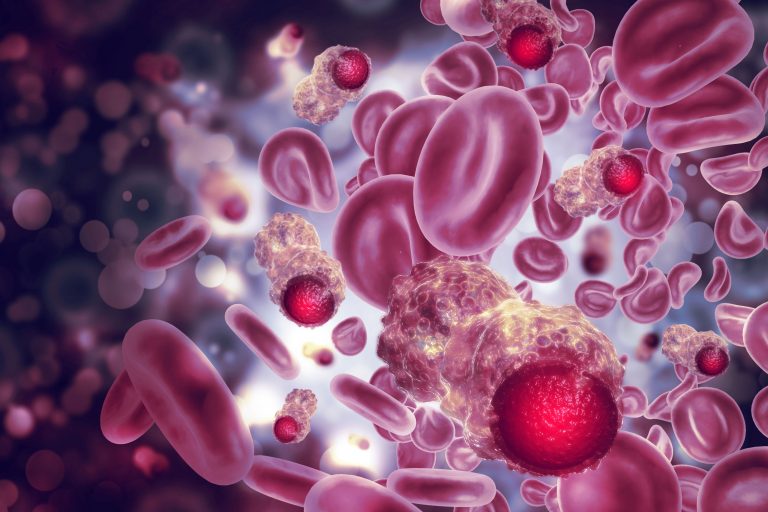
Extra copies of a piece of DNA help explain insensitivity to chemotherapy in germ cell cancer, a new study shows. In cell line models of germ cell tumors (GCTs) copy number gain of chromosome 3 cytoband p25.3 was associated with cisplatin resistance. While cisplatin is generally effective in GCTs, 5% to 10% of patients experience resistance.
Senior author Leendert Looijenga noted, “In the future, our findings could help pick out patients with high-risk germ cell cancer, so doctors can offer alternative treatment if chemotherapy does not work.”
Germ cell cancer is caused by a fault in the development of eggs in girls and sperm in boys. It is most often affects boys and men between the ages of 15 and 45, but is also seen in younger children. The cancer can develop in the testicle or elsewhere in the body, such as behind the breastbone. Most patients are cured thanks to the combination of surgery and chemotherapy with cisplatin. But in some cases, the disease is insensitive to this type of chemo.
To find the underlying cause of cisplatin resistance, scientists at the Princess Máxima Center for pediatric oncology in Utrecht, the Netherlands, looked at cells in the lab, tumor samples, and clinical data from children, boys, and men with germ cell cancer. Their research was published this week in the Journal of Clinical Oncology.
First, the scientists analyzed the entire DNA of living GCT cells that had been desensitized to cisplatin. Looijenga, group leader at the Princess Máxima Center, said, “We found that all chemo resistant cells had extra copies of a piece of DNA in the so-called 3p25.3 region. The more extra copies, the less sensitive the cells in the lab were to the chemotherapy drug, cisplatin.”
Next, the researchers studied the DNA from GCTs of male patients of different ages, both before and after treatment with cisplatin, to see how often the change in 3p25.3 occurs. “We saw the extra copies in 15 of the 221 cases—so the fault is rare,” said Looijenga. “But we also saw that this change clearly occurs more often after treatment with cisplatin—in other words, in patients for whom the drug no longer worked. This tells us that the extra copies of this piece of DNA play a role in the resistance to this chemotherapy.”
To further investigate the effect of the extra copies of 3p25.3, Looijenga’s team looked at data from a group of 180 GCT patients who had been treated in the United States. They saw that, on average, the disease came back more often in boys and men with the 3p25.3 change. These patients also survived less long. Looijenga noted, “This confirms that our findings on the 3p25.3 abnormality from the laboratory are also of clinical value.”
He added that: “Our research is still at an early stage, but in future our findings could help pick out patients with germ cell cancer who are at high risk of resistance to cisplatin chemotherapy at an early stage. For them, cisplatin is unlikely to work well and the doctor can offer alternative treatment. As a next step, we aim to investigate if this DNA abnormality also plays a role in germ cell cancer in girls and women. We are also working in the lab on possible alternative treatments that could work if cisplatin has no effect.”













